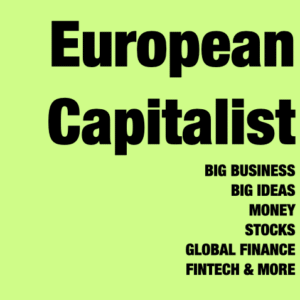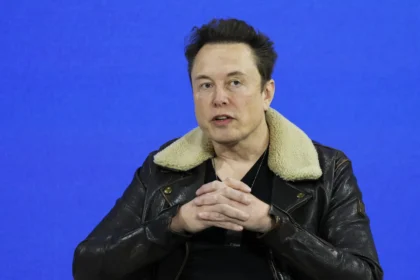Corporate America is witnessing a seismic shift in how top executives are being paid. Inspired by Elon Musk’s record-breaking Tesla compensation deal, an increasing number of CEOs are now demanding “moonshot” pay packages — enormous performance-based awards that promise billions in stock value if the company hits ambitious milestones.
- A New Era of Hyper-Performance Pay
- The New Musk-Inspired Mega Deals
- A Growing Backlash from Shareholders
- Why CEOs Love the “Moonshot” Model
- Risk, Reward, and the Illusion of Accountability
- The Ethical Question: What About Workers?
- The Future of CEO Pay: Reform or Escalation?
- A Dangerous Precedent for Corporate Capitalism
But as these headline-grabbing deals proliferate, compensation experts, corporate governance watchdogs, and shareholders are sounding the alarm, warning that such structures could distort incentives, promote reckless risk-taking, and widen the already massive gap between executive and employee pay.
A New Era of Hyper-Performance Pay
The movement traces back to Elon Musk’s historic 2018 Tesla pay deal, a $56 billion stock-option package that was tied to aggressive performance targets — making it the largest executive compensation plan in modern history. Musk’s deal promised no guaranteed salary or bonus; instead, he’d earn massive stock options only if Tesla achieved specific revenue, market cap, and profitability goals.
While controversial, Musk ultimately met many of the targets, propelling Tesla into one of the most valuable companies in the world and himself into the ranks of the richest individuals alive.
Now, corporate boards across multiple industries — from tech and energy to biotech and finance — are replicating the model, offering their own executives mega-deals pegged to “transformational growth.”
“We’re entering the age of the Musk model,” says James Holloway, a senior partner at Mercer. “Boards are increasingly convinced that paying for impossible goals will drive visionary performance. But the danger is: what happens when the vision fails?”
The New Musk-Inspired Mega Deals
Several recent executive packages have drawn scrutiny:
- Sam Altman’s OpenAI proposal reportedly includes long-term performance bonuses tied to AI scaling milestones and global revenue growth — potentially worth billions if achieved.
- Patrick Gelsinger of Intel has a new plan that grants large stock bonuses tied to chip innovation and U.S. manufacturing targets.
- Marissa Mayer’s return to the tech scene with a new startup includes equity triggers based on user adoption rather than profitability — echoing Musk’s market cap-driven metrics.
- Even legacy industrial companies like General Motors and Shell are exploring multi-year “moonshot” performance schemes tied to sustainability and decarbonization goals.
In nearly every case, executives pitch these plans as “zero-risk to shareholders” because they pay out only if companies achieve extraordinary growth. But critics argue that’s a dangerous illusion.
“It’s a heads-I-win, tails-you-lose scenario,” says Claudia Perez, a governance expert at Institutional Shareholder Services (ISS). “These deals look performance-based on paper, but they can create perverse incentives to inflate short-term valuations or take outsized risks to hit targets.”
A Growing Backlash from Shareholders
Shareholders have begun pushing back. In early 2025, Tesla’s own investors challenged the legality of Musk’s 2018 pay package, with a Delaware court ruling it “excessive and influenced by conflicted directors.” Although the case is still under appeal, it sent a chilling message to other boards.
“If Musk’s deal can be overturned, any moonshot package can,” said David Larsson, a shareholder activist at Glass Lewis. “Boards must justify that these pay structures truly align with long-term shareholder interests — not just CEO ambition.”
Several companies, including Salesforce, Palantir, and Rivian, have already faced investor revolts over similar pay plans in recent months. Critics point to the moral optics as much as financial fairness: executives chasing billion-dollar bonuses while employees face layoffs, hiring freezes, or declining benefits.
Why CEOs Love the “Moonshot” Model
Despite criticism, CEO enthusiasm for moonshot pay plans continues to grow. The appeal is obvious: the deals promise limitless upside, no guaranteed salary risk, and a heroic narrative — positioning the CEO as a visionary builder rather than a mere corporate manager.
“It’s more than money — it’s mythology,” explains Dr. Naomi Kent, a behavioral economist at Wharton. “These packages are built around the idea of the CEO as a transformational figure. They turn compensation into a story about destiny, not just numbers.”
Boards, too, are often seduced by the narrative. A bold pay structure signals to the market that the company is betting on innovation and long-term value creation. It also helps retain high-profile talent in an era when tech leaders like Musk, Bezos, and Altman have made entrepreneurship glamorous again.
But the very psychological mechanisms that make these deals so attractive — the allure of legend and legacy — are also what make them dangerous for stable governance.
Risk, Reward, and the Illusion of Accountability
Governance experts warn that when pay is tied to massive, singular goals, CEOs may prioritize stock price manipulation, risky mergers, or unsustainable cost-cutting to hit performance triggers.
“The structure creates a casino dynamic,” says William Grant, former SEC enforcement attorney. “CEOs have every incentive to gamble big, because if it pays off, they win billions — and if it doesn’t, shareholders absorb the losses.”
A recent Harvard Business Review study found that companies adopting “moonshot” pay structures had 50% higher earnings volatility and 30% greater executive turnover than firms using balanced, multi-metric plans.
The Ethical Question: What About Workers?
Beyond governance, the rise of mega-compensation deals raises social and ethical questions about corporate inequality. In 2025, the average CEO-to-worker pay ratio in the U.S. surpassed 350:1, compared to 20:1 in the 1960s.
“We’re rewarding a myth of genius while ignoring the collective effort of thousands of employees,” says Dr. Anita Chowdhury, a labor economist. “The Musk model glorifies lone saviors at the expense of systemic fairness.”
Some European firms have responded with legislative caps or tax penalties on extreme pay ratios, while U.S. lawmakers have floated similar proposals — though none have yet passed.
The Future of CEO Pay: Reform or Escalation?
Despite mounting criticism, compensation consultants predict the moonshot trend will continue, especially in industries tied to artificial intelligence, green tech, and biotech — sectors where exponential growth feels within reach.
However, experts also foresee greater shareholder activism, regulatory oversight, and public scrutiny.
“If these deals keep expanding unchecked, we’ll see a reckoning — in courts, in Congress, and in the marketplace,” says Holloway. “You can only stretch the definition of performance so far before it snaps.”
A Dangerous Precedent for Corporate Capitalism
The new generation of CEO pay plans represents more than an economic shift — it’s a cultural one. The Musk effect has turned compensation into ideology: risk-taking as heroism, inequality as innovation, and ambition as justification.
Whether that leads to a new era of transformative leadership or another corporate reckoning remains to be seen.
For now, one thing is certain: the race to the next “moonshot” is on — and the stakes, both financial and moral, have never been higher.







